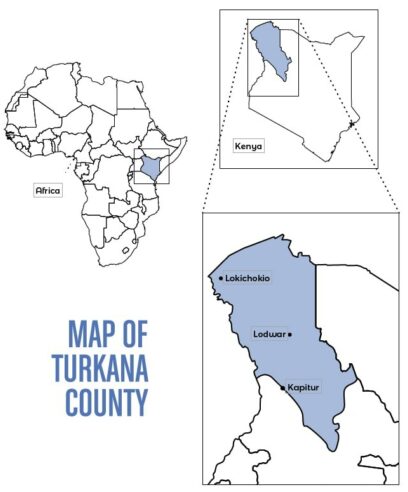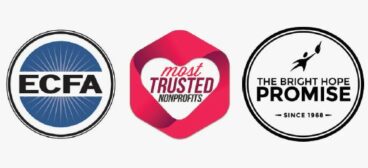THE TURKANA DROUGHT
FACT SHEET - SPRING 2019
The Turkana region in northern Kenya is experiencing an extreme drought. Many people are facing starvation from a lack of food and resources and there is a serious need for aid.

WHAT IS TURKANA LIKE?
- Located about 435 miles from Nairobi, Turkana is the second-largest county in the country, covering about 42,675 square miles.
- Population of about 1.2 million people.
- Arid area, with temperatures reaching close to 104°F during the dry season.
- Average rainfall ranges from 4-19 inches per year.
- Home to nomadic pastoralists who mainly keep cattle, donkeys, camels and goats for food and income.
What is going on there now? What is the crisis?
The Turkana area is experiencing a harsh drought which has led to a food shortage in the region. The less-than-average rainfall during the rainy season and the total absence of the short autumnal rains in 2018 have aggravated the current situation, escalating the drought to a dangerous level.
How many people are at risk of starvation?
Nearly 200,000 people are in urgent need of food in Turkana, while it’s estimated that about 1.1 million people in half of Kenya’s counties do not have access to enough food.
What is Bright Hope doing to help in this crisis?
Bright Hope is currently in the process of implementing a sustainable farming solution that will help mitigate food insecurity. In the short term, with the help of our church partners, we are distributing flour, beans, oil and salt to communities and families that have the greatest needs.
Is drought common in Turkana?
Droughts have been recorded in this region since the 1960s. The drought used to occur approximately every five years, but since the 1990s, it’s now almost a yearly phenomenon. Since the people rely on their livestock for food and income, this has severely impacted them. Any calamity that befalls their animals tends to drastically affect their livelihood. This is why the starvation risk is real.
Would the problem be solved if it rained immediately?
It’s not that simple. The people would need time for their animals to restock naturally (reproduction) after so many have died. Planting season has just begun, therefore harvest would not occur for a few more months... so there would still be shortage of food for both humans and animals. Once the rains subside again, the cycle could repeat itself, but not as severely as it is now.
Is the local government doing anything to help?
Yes, the government is distributing food and water, but they have limited resources. Some irrigation system development has occurred to establish agriculture in the region, but this is a process. Adaption through positive experience is necessary in order to change the attitudes and mindset of the Turkana people, who identify with the pastoralist way of living. Some simply hope that it will rain and that there will be an abundance of pasture for their animals.
What will bring this crisis to an end?
1. Access to fresh and clean drinking water for every person and animal.
2. The successfull introduction and acceptance of modern farming techniques to produce adequate food supplies.
With your help, we can bring immediate relief to the situation. Learn more: http://www.brighthope.org/drought





Pray for God to provide for the victims of the drought. Consider joining our text prayer team to receive bi-monthly prayer requests and praise reports about the drought and other pressing needs. www.brighthope.org/prayer-wall
Give food to people starving in Turkana. https://www.brighthope.org/catalog/
Volunteer a few hours of your time. Join Bright Hope Tribe and serve as a volunteer advocate.
Bright Hope has been serving the poor for over 50 years. We are a Christian relief and development agency, empowering churches that are in some of the world’s poorest remote villages and darkest city slums. Read our Bright Hope Promise here:

Bright Hope unites Christ-followers from around the world to bring Hope and help to those living in some of the most impoverished places on Earth. Through our Hope for Today, Hope for Tomorrow, and Hope for Eternity ministry model, we can break the grip of generational poverty, and as we do, we see lives changed and our own hearts grow.

HOPE FOR TODAY
- Emergency Relief
- Orphans and Vulnerable Children Advocacy
- Clean Water
- Feeding Programs
- Medical Care

HOPE FOR TOMORROW
- Microfinance
- Education
- Agricultural Practices

HOPE FOR ETERNITY
- Resourcing Church Ministries
- Church Leadership
- Development
- Evangelism and Discipleship Support
